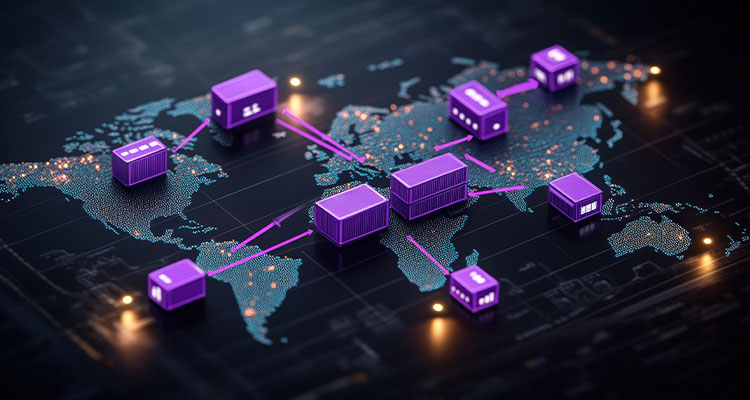
Nigel Pekenc, Partner at Kearney, shares his tips on mastering complexity to create future-ready supply chains
Give us an overview of your career history and how you came to be in your current position.
I’m an engineer by training, but I ‘cut my teeth’ in operational management roles with Novartis, where I ran efficiency projects on packaging lines and helped set up a new distribution center in Istanbul, Türkiye. In 2008, I joined Kearney and never looked back. Over the past 17 years, I’ve focused on helping clients optimize their end-to-end supply chains, and today, I help many navigate the challenges of the current geopolitical climate.
Can you provide an overview of Kearney’s operations?
We’re trusted advisors to business leaders, driving operational excellence and impact. We blend hands-on industry experience with deep supply chain expertise, digital transformation insights, and an understanding of the shifting geopolitical landscape. Our clients call us ‘results’ consultants because we focus on solving complex operational challenges. Whether it’s cost management, service, or leveraging digital technologies, we help businesses optimize their supply chains from end-to-end planning, sourcing, production, and distribution.
How are you seeing supply chains evolve in terms of nearshoring and reshoring?

Nearshoring and reshoring have been discussed in depth for over 20 years, but the Covid-19 pandemic and recent macroeconomic challenges have really brought them up the agenda for the C-suite. It’s rarely as simple as it seems. The idea of shortening supply chains to reduce risk often overlooks the complexity of global networks, such as with semiconductor production.
Typically, nearshoring therefore results in decoupled supply chains, where only assembly moves closer to the market and value-add stays upstream. However, with rising supply chain risks and a more fragmented world, nearshoring and reshoring are becoming key strategies in reconfiguring supply chains. This move to the ‘reindustrialization’ of nations that have for decades relied heavily on imported goods from overseas means it’s essential that we find new ways to square these traditional challenges.
What about automation, AI, and digital infrastructure – how can these technologies help strengthen supply chains?
This ties closely back to the previous point. In many developed economies, the working-age population is shrinking. This leads to labor shortages, especially in skilled and engineering roles, just as the reindustrialization mentioned above picks up speed. One part of the solution will involve heavy investment in automation, AI, and digital infrastructure to increase capacity and productivity.
These technologies will be crucial in managing the complexity of modern supply networks, rather than being overwhelmed by it. For instance, they’ll help businesses navigate volatile demand patterns, remote working, and input from multiple groups while optimizing alternative routings.
How is nearshoring accelerating deglobalization?
If nearshoring does succeed in moving manufacturing hubs closer to consumer bases, we will likely see a contraction of supply chains around the larger markets of the globe. Industry 4.0 will naturally be accelerated by the requirement for AI and digital tools to offset labor shortages in these countries, potentially leading to a split between the more developed nations benefitting from this new paradigm and the developing nations that have seen industry pull out as supply chains shorten.
What impact do you think the new administration is having or will have on global supply chains?
The biggest challenge facing supply chains today is geopolitical and regulatory uncertainty. This uncertainty is delaying investment decisions and increasing volatility in both supply and demand. Predicting demand has become more difficult than ever, and the stable conditions businesses once relied on are no longer present. As a result, the ‘bullwhip’ effect has intensified, where small shifts in demand get amplified throughout the supply chain. This leads many businesses to either overproduce or underproduce, with few achieving the ‘Goldilocks’ balance of stock they need.
What are the biggest challenges facing supply chains in 2025, and how do you think we can navigate them?
The biggest challenge in 2025 will likely be geopolitical instability, followed by climate change and ongoing digitalization. The retreat of the US from its role as a trade guarantor is accelerating deglobalization, while inflation is eroding the cost advantages of low-labor-cost countries. Climate change is adding volatility, and unpredictable weather events will disrupt global value chains. Digitalization is reshaping supply chains, benefiting companies that are agile enough to adapt.
What trends will define the future of supply chain management?
The future of supply chain management will be shaped by the shift towards multi-local, connected value chains. While reshoring is gaining attention, it faces high costs and complexities, making it challenging to replace global supply chains entirely. The focus will be on managing risks without abandoning the benefits of globalization benefits. Digitalization will be key, offering visibility and control over complex networks. Agility and adaptability will also be essential for navigating risks as they crop up, whilst multi-shoring strategies will help mitigate disruptions.
In short, success will depend on building resilience into the organization, focusing on end-to-end value, not just cost reductions, and mastering complexity rather than avoiding it.
Nigel Pekenc